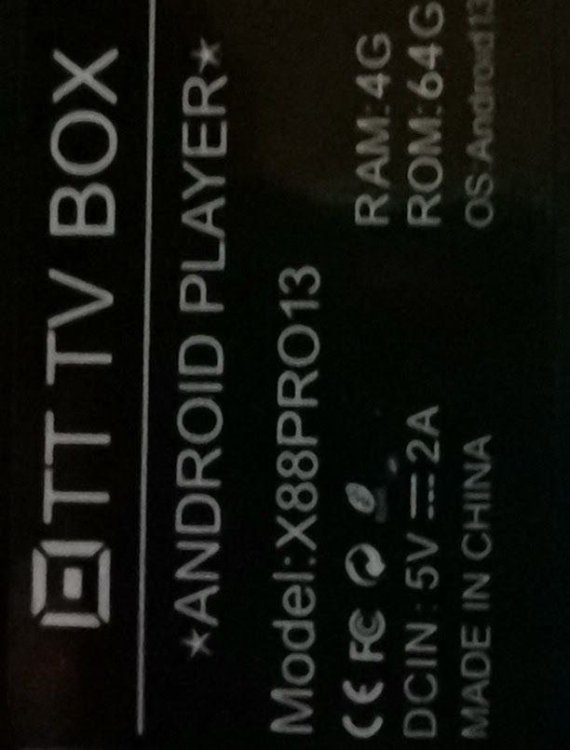Active threads
Showing topics posted in for the last 365 days.
- Today
-
Same/similar issue. Armbian Bookworm v25.8.1 on BTT Pi. wlan0/wlan1 devices are visible, but after first reboot, do not connect anymore. Even after stopping any networking-related services/processes, "iw wlan0 scan" just returns "device or resource busy". Changing the netplan renderer to network-manager as recommended did not work for me either. I also experienced the sunxi64-mmc kernel error messages when trying to reload the rt8189fs module. After switching kernel from 6.12.47-current to 6.16.8-edge, WLAN worked right away. But in exchange the wired eth0 device is now gone completely... you can't have it all (Maybe related to this?)
-
Hi eselarm Thank you for your post. I can't still find a button to answer directly to your post in this forum. If I replace the HW - and I could afford it - then the question of migration to the new platform arises. Nextcloudpi worked fine on armbian releases, there is no point in changing the OS. Obviously it is close enough to debian so the "port" from debian to armbian is not very difficult. As long as the same base version (bookworm, trixie) is used. Even debian 12 did not support the required PHP version 8.1 at the time, nextcloud required it. But nextcloudpi still did the update to that nextcloud version with the result of nextcloud not running. I host nextcloud at home and I don't want a fan running at full speed in my living room. The "generic x86-64" (or amd64) is really no choice. Once I bought a WLAN router with built-in room for a disk but even with no disk installed the fan did run and couldn't be stopped. Returned it. I heared about proxmox, docker. LXC and LXD. For the latter there are images for x86-64 HW with nextcloudpi provided. But choosing the right HW and do the migration to it seems difficult to me. Regards Norbert
-
Yes the WTL-40110175 3.8v 10.000mAh battery has 3x red (PB+) and 3x black (PB- GND) and 1x yellow (Overvoltage?) or Temperature) Here in Turkey I do only find a 3.7v 10.000mAh Cell, but without the yellow cable (only red and black): https://www.n11.com/urun/1260110-37v-10000mah-li-polymer-pil-devreli15a-87767963 The battery PDF gives me very less clues Pinebook-WTL40110175-3_8V-10000mAh-14inch.pdf
-
In the end, I couldn’t recover the device and ended up purchasing a new one. It was also a V5.1 board, but fortunately, it booted from the SD card without any extra steps and installed successfully. It seems we should keep in mind that even boards with the same version may not always work the same way.
-
Yes, but I haven't test it. I used pre-flashed to boot my image and I am done with this board / platform. Someone else has to take it from here. If board gets maintained status, this will start working automatically. Links point to our servers where this board images are not present - we only keep supported on our servers, for things we know they at least boot.
-
The rk3588 soc has a fixed boot order which is spi, emmc, microsd, other I think. So if there is a boot loader found on spi it will ignore other options and try to boot from that. While Armbian uboot binaries on spi are instructed to check if there is a microsd card inserted and boot from that, vendors can (ab)use this circumstance to make it harder for other operation systems being used because tools like rkdevtool are necessary to get rid of it. If the spi is pre-flashed with crap, I guess that's why the step is necessary.
-
😄
-
I believe it was android I don't care what os it has just want to get it to work again
-

mxq pro 4k 5g allwinner h313 can't sd card boot
Ducdanh Nguyen replied to Ducdanh Nguyen's topic in Allwinner CPU Boxes
@AndroidNewbie Do you have the image of the box? - Yesterday
-
Hi, I’m working on enabling I²S audio output using a PCM5102 DAC on an Orange Pi Zero 2W (SoC: Allwinner H618) running Armbian_community_25.11.0-trunk.334_trixie_current_6.12.47_minimal. Despite several tests and rebuild attempts, I haven’t been able to obtain any sound output from the I²S interface. Below is a summary of what has been done so far. Hardware setup Board: Orange Pi Zero 2W SoC: Allwinner H618 DAC: PCM5102 (I²S input, analog stereo output) Connections: I2S0 → used for DAC (pins LRCK, BCLK, DIN, GND, 3.3V) Confirmed pin mappings according to H618 documentation and available DTS files. OS Image: Armbian_community_25.11.0-trunk.334_Orangepizero2w_trixie_current_6.12.47_minimal What has been done 1. Kernel confirmed to be mainline-based (6.12.47-current-sunxi64). Linux orangepizero2w 6.12.47-current-sunxi64 #1 SMP aarch64 GNU/Linux 2. Checked kernel symbols to verify presence of sunxi audio modules: Shows sound/soc/sunxi/sun8i-codec.c among others. Created a custom overlay at /boot/overlay-user/sun50i-h618-i2s0-pcm5102.dtso, based on examples from sun8i boards, with simple-audio-card referencing the i2s0 controller. Enabled overlay in /boot/armbianEnv.txt : user_overlays=sun50i-h618-i2s0-pcm5102 Rebooted and verified device tree loading → No audio device or sound card is registered. Also tried with predefined overlay sun50i-h618-i2s2-pcm5102 included in the Armbian tree → no sound card detected (aplay -l returns “no soundcards found”). Findings It seems that the H618 SoC has no upstream audio codec driver (unlike H616 which includes sun8i-codec). The I²S controller node exists in the mainline kernel sources, but may not be fully supported or linked to a DAI (Digital Audio Interface) for external DACs. simple-audio-card bindings appear to compile correctly in the overlay, but the device never registers in ALSA. Questions Is there any working DTS overlay or patch enabling I²S output (no internal codec) for the H618 platform? If not, what would be the correct approach — patching the DTS at kernel source level or adding a compatible binding manually? Has anyone successfully used a PCM5102 (or similar DAC) with the H618-based boards under Armbian? My goal To have a functional stereo I²S audio output through PCM5102 (or any compatible DAC), recognized as an ALSA sound card in Linux. Any help, hints, or working overlay examples would be greatly appreciated. Thanks in advance for your time and expertise! Jose Cardoso
-

How to install armbian in h618?
Алексей Торопов replied to alienxz77b's topic in Allwinner CPU Boxes
Please help, I'm stucked (or, may be stupid). I use my tv-box as printserver (Klipper), it works fine. Now I attempt to use accelerometer ADXL345 usb board, and I havnt success. It must be simple task, but something went wrong here. Board works, flashed normally without any errors and shown as should by lsusb: klipper@transpeed-8k618-t:/usr/lib/udev/rules.d$ lsusb Bus 003 Device 002: ID 1a86:7523 QinHeng Electronics CH340 serial converter Bus 003 Device 001: ID 1d6b:0001 Linux Foundation 1.1 root hub Bus 002 Device 001: ID 1d6b:0002 Linux Foundation 2.0 root hub Bus 004 Device 013: ID 1d50:614e OpenMoko, Inc. rp2040 Bus 004 Device 001: ID 1d6b:0001 Linux Foundation 1.1 root hub Bus 001 Device 001: ID 1d6b:0002 Linux Foundation 2.0 root hub Also, it must be appear as serial device, but... klipper@transpeed-8k618-t:/usr/lib/udev/rules.d$ ls -l /dev/serial/by-id total 0 lrwxrwxrwx 1 root root 13 Nov 8 18:47 usb-1a86_USB_Serial-if00-port0 -> ../../ttyUSB0 ...here is my "Ender" only. dmesg: [30617.149526] usb 4-1: new full-speed USB device number 22 using ohci-platform [30617.358206] usb 4-1: New USB device found, idVendor=1d50, idProduct=6177, bcdDevice= 1.00 [30617.358227] usb 4-1: New USB device strings: Mfr=1, Product=2, SerialNumber=3 [30617.358235] usb 4-1: Product: rp2040 [30617.358242] usb 4-1: Manufacturer: katapult [30617.358249] usb 4-1: SerialNumber: E6647C7403433637 [30663.467079] usb 3-1: new full-speed USB device number 3 using ohci-platform [30663.665820] usb 3-1: New USB device found, idVendor=1a86, idProduct=7523, bcdDevice= 2.64 [30663.665867] usb 3-1: New USB device strings: Mfr=0, Product=2, SerialNumber=0 [30663.665891] usb 3-1: Product: USB Serial [30663.668223] ch341 3-1:1.0: ch341-uart converter detected [30663.680198] usb 3-1: ch341-uart converter now attached to ttyUSB0 I've search solutions, but have not resolve. -
I gave some information ..... Hit:8 http://fi.mirror.armbian.de/beta bookworm InRelease ? 🙂 If this is a bug, meaning the repositories are in beta, then OK... but I don't know if I installed them? Or are they standard in the images/firmware installations, e.g., for the Opi3LTS version? Ps. Has support for my OrangePi3LTS model been completely abandoned? ...because now I don't have the option to install the system to the emmc memory in the :armbian-config options? / nand-sata-install / armbian-install 😞
-

Setup for current Armbian/Ubuntu (25.8.2) for PCF8563 RTC on C2
Scott Ksander replied to Scott Ksander's topic in Odroid C2
I tried rebuilding the Device Tree as suggested in other forums. No Joy!! Still can't get it to work. Also added i2c-dev module but that isn't showing in lsmod. Help appreciated. Clearly I am missing something here. This shouldn't be difficult. :-) -
Apparently, there are more versions of the box. One has two stars on the nameplate and "V 1.4" printed on the PCB. Although WiFi works on version 1.2, if does not work on this version V1.4 has a different Wi-Fi chip: EA6521. dmesg | grep 'SDIO' gives: [ 9.621165] mmc2: new ultra high speed SDR104 SDIO card at address 8800
-
> drop them. > drop it. sorry. Someone is dropping something here I'm not sure if support was ever better or downgraded at one point because it never had it's own page on the site, it's just a mention of a device tree file swap under orange pi 5, which is listed as standard. If it's not different enough to warrant it's own page, it's entirely reasonable to think it is supported as much as the orange pi 5, under which it can be found. The max, plus and pro variants all have their own pages. 🤷♂️ I do understand how tooling works, as I've spend enormous amounts of time digging through the repo and modifying it. Mix and matching patches, modules, or loaders from other projects where their stuff works , and armbian's doesnt or visa versa, to get full functionality images across for the 6 different sbcs I've got. Often times certain projects will have things like vpu figured out way before other projects.
-

Vontar KK MAX / HK1 RBOX R2 / R3 - RK3566 4GB/32GB(or 64GB)
Deoptim replied to Deoptim's topic in Rockchip CPU Boxes
Continuing the story. Or 4pda (Russian). -
If you have patience, CEC may work at some point with mainline kernel. There is not fast solution.
-

Update issue armbian-bsp-cli-rpi4b-current held back
callegar replied to binkerd's topic in Raspberry Pi
See There is an issue with the build framework that prevents base-files from being built for the arm64 target. At present time the issue is unresolved, and the root cause might be still unknown. - Last week
-

Anyone have Armbian 24.11 image for Jetson Nano?
Igor replied to ArmOnJetson's topic in Other families
https://github.com/armbian/os/commits/25.11.0-trunk.367/git_sources.json This file determine state (hash) of sources. It's not a straightforward process, but one can recreate exact image (except userspace packages, which versions are not stored) This file has to be here https://github.com/armbian/build/commit/31e82512cc60a74f56b710aa2971d7dc2beec9b9 One day, this will be done better Sadly there is too much of such e-waste and way way too little people willing to maintain them in their limited private time. I am sure you can find a working image somewhere in our archives so you don't need to throw it away, but we cannot fool you & ourselves to be able to keep this board maintained. -

Cannot run ARMbian on my tv box (TX10 PRO)
Farhan Ishraq replied to erebus041's topic in Allwinner CPU Boxes
@erebus041 @Nick AOne small detail: I've used etchdroid and drofus to burn my sd card. -

noble server and xfce fail to start up properly on RPi5
c0rnelius replied to Janos Szigetvari's topic in Raspberry Pi
Ok. Also I think these are wrong for the PI5: dtoverlay=disable-wifi dtoverlay=disable-bt I believe it's: dtoverlay=disable-wifi-pi5 dtoverlay=disable-bt-pi5 My notes on this: # Pi3 / ZERO2W dtoverlay=pi3-disable-wifi dtoverlay=pi3-disable-bt # PI5 dtoverlay=disable-wifi-pi5 dtoverlay=disable-bt-pi5 # Everything else dtoverlay=disable-wifi dtoverlay=disable-bt Back in the day, I read somewhere that Bluetooth can inhibit serial from functioning correctly on the Pi's. I've never seen it happen, but maybe using the wrong overlay is hindering it in some way? Worth looking into. -
I just noticed from your screenshot that you aren't using Armbian. You need to ask support questions for non-armbian software from where you got your software. Ophub is a fork of Armbian that used the Armbian name without permission. They do not contribute to Armbian development nor do they contribute the these forums.
-

Gaming experience with Orange Pi 5 (RK3588) on Armbian
heyrict replied to KhanhDTP's topic in Orange Pi 5
Armbian Trixie XFCE (Edge kernel 6.18.0-rc3-edge-rockchip64) + Stable mesa 25.0.7-2 + box64-rk3588 0.3.9+20251106.dcd3ba0-1 (https://ryanfortner.github.io/box64-debs/) + wine-10.18-staging-tkg-amd64-wow64 (https://github.com/Kron4ek/Wine-Builds/releases) + dxvk-sarek v1.11.0-sarek-async-writeaccessfix-malifix-5d21d2b (https://github.com/pythonlover02/DXVK-Sarek/actions) Elin ~40fps@720p











